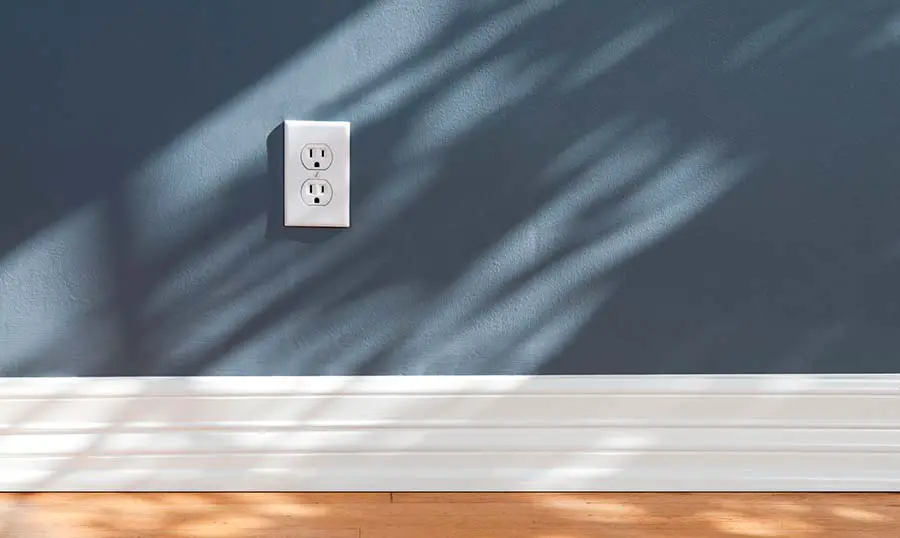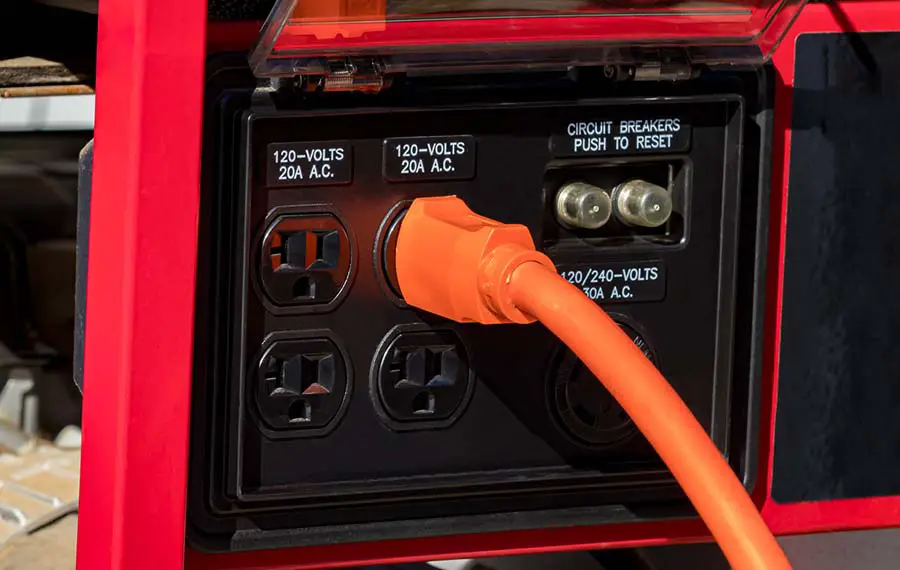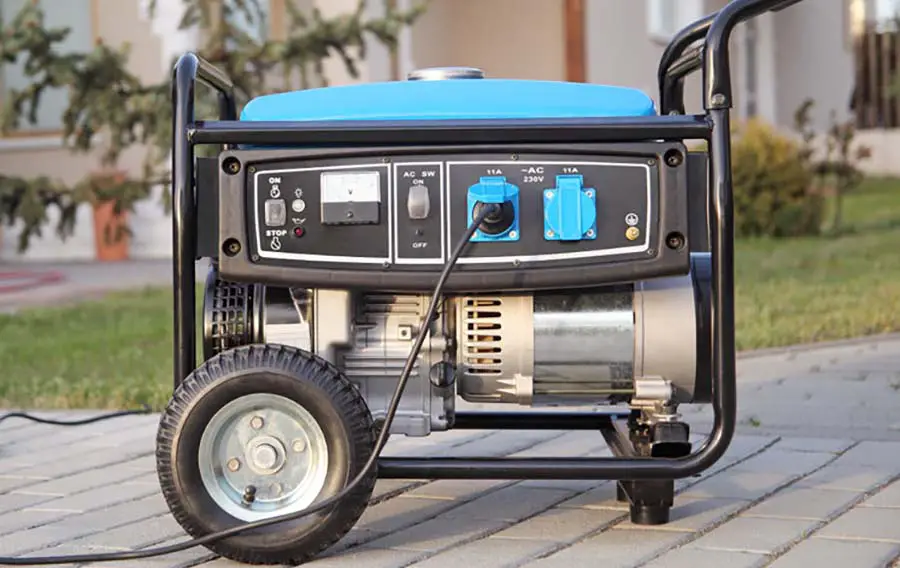
Portable generators are the next best thing to get you through a power outage outside of whole-house generators. Portable generators are great because they’re multi-functional, in that you can use them for your house, while camping, or for a variety of other purposes.
Depending on the size and output of your portable generator, it can power 10 to 50 wall outlets in your home. A 15 or 20 amp breaker connects outlets in a home, with a total wattage of around 1,800. A 2,000-watt generator can power one of these circuits with 10 to 15 wall outlets.
You can also split circuits up so that you can power outlets in different parts of your house on different circuits rather than just one specific circuit. There are many generator sizes with varying capabilities. In this article, we’ll look at the capabilities of various generators and how many outlets a portable generator can power.
How Many Outlets Can a Portable Generator Power?
Because there are around ten outlets per 15 amp circuit equaling out to around 1500 watts, each outlet has anywhere from 100 to 130 watts of electricity. Some outlets, however, are designed to have around 240 watts of electricity to accommodate appliances like refrigerators and freezers. These outlets take more power to operate and limit the number of other outlets your portable generator can operate.
Portable generators come in sizes ranging anywhere from 1200 volts to 12,000 volts. The smaller 1200 volt generator can only operate 6 to 10 outlets at a time, while a 12,000-volt generator can power all the outlets in your house. It also depends on what is plugged into your outlet, as different appliances and devices have different amounts of wattage.
Here’s a list of wattage amounts based on appliances and devices.
| Household Item | Wattage (W) |
|---|---|
| Refrigerator | 600 |
| Coffee maker | 1,000 |
| Freezer | 130 |
| Dishwasher | 1,500 |
| Electric kettle | 1,200 |
| Electric oven | 2,000 |
| Microwave | 1,000 |
| Pressure cooker | 700 |
| Rice maker | 200 |
| Toaster | 850 |
| Hairdryer | 1,250 |
| Iron | 1,200 |
| Electric washer | 1,100 |
The defining factor about these devices and appliances is that they get plugged into outlets. I didn’t include the central AC, the water heater, or the furnace because those are often hard-wired and have circuits. Several of the appliances listed above do as well but get plugged into outlets nonetheless.
Based on the measurements above and saying that you have a 3,000-watt generator, here’s what you can operate simultaneously. You could be running your washing machine, iron, and toaster simultaneously, but not much more. These devices total out at around 3,000 watts and will max out your generator.
How Many Appliances Can a Portable Generator Run?
The number of appliances that a portable generator can run depends on the generator size and the appliance in question. For example, a 3000-watt generator can only power one device at a time if the appliance is a central air conditioning unit that operates at 3,000 watts. If, however, you have a 12,000-watt portable generator, the possibility exists to power multiple appliances at once.
Keep in mind that the starting watts of an appliance are different from the running watts. A refrigerator might have a starting watt requirement of 1000 watts, but it only uses 500 watts once it’s running. When this is the case, you can start appliances up individually, get them running at the lower wattage amount, then start up the next appliance.
Starting each appliance one at a time will keep you from overloading your generator by trying to start all of your appliances up simultaneously.
Do Portable Generators Have Outlets?
Portable generators always come equipped with outlets of some sort—the variety and amount of outlets depending on the generator. Most portable generators will have outlets capable of powering 12 volts DC, 120 or 240 volts AC, or even USB ports. Some generators have four options, while others have only one or two.
The bigger the generator is, the more capabilities it will have as far as plugs and outlets are concerned. This type of generator will also have more versatility regarding where you can use it and how you implement it. Portable generators must always have outlets of one kind or another, however, as plugging a cord into them is the only way to get power to where you need it.
What are the Different Plugs on a Generator?

Portable generators have several different plug options depending on the type of generator that you purchase. If you get one with all the bells and whistles, you’ll have up to four different types of plug options.
12 Volt DC
A 12 volt DC plug is what you see in cars, trucks, and other vehicles. It’s the plug you insert the car charger into for your phone. Most portable generators will have this type of plug simply because it draws very little power, and almost every size of generator is capable of supporting it.
120 Volt AC
One hundred twenty volt AC outlets are the outlets that you have dispersed throughout your house and that you plug everyday appliances into like refrigerators and TVs. They will have holes that fit 3-prong cords and output whatever amount of watts your generator can handle. Most portable generators will have two of these outlets, similar to the outlets in your house.
240 Volt AC
A 240-volt outlet comes in various shapes and sizes, but they’re the type of outlet you use for a stove or electric dryer. They’re larger than the typical 120-volt outlets and can handle appliances that operate at higher numbers of watts. For this reason, smaller generators will not have the option of a 240-volt plug simply because it isn’t capable of supporting anything that requires this type of outlet.
USB Plugs
Finally, most generators come equipped with USB outlets because they have 12-volt DC outlets. All generators can charge a phone or other electrical device because USB ports add very little stress to the generator.
What Happens If You Overload Your Portable Generator?
Overloading a generator can result in damaging your generator, flipping breakers, or even starting a fire. Overloading a generator without knowing it can cause the generator to overheat and potentially present a fire hazard. Keep in mind that generators are gas-powered machines, and even the slightest spark from overheating can result in a fire or explosion.
Luckily, newer generators come outfitted with safety devices where your breaker or GFI outlet will trip if your generator is overloaded. Because the generator trips a breaker before it can fully overload, you eliminate the potential for overheating and having a fire hazard.
Older generators, however, often don’t have these safety features and will run until you stop it or it stops itself. You must be much more cautious with older generators and pay attention to the number of watts it’s powering. If you’re concerned about this, it’s a good idea to have a wattage meter handy to do precise wattage measurements.
Here are two simple ways to calculate the number of watts an appliance produces.
- Use a wattage meter. To do this, simply plug the appliance in question into the wattage meter. Next, plug the wattage meter into a nearby outlet, and the number of watts that the appliance is using should pop right up.
- Multiply volts x amps. Most appliances and electrical devices should say the number of start-up watts and the number of running watts it uses. However, if this isn’t the case and they instead list the number of volts and amps, here’s what you do. Simply multiply the volt amount by the amp amount, and that will give you the watt amount.
By calculating the number of watts you’re using and comparing that number to the wattage amount your generator can handle, you can keep from overloading a generator. If you’d rather keep an eye on your generator instead of adding up watts and volts and using a wattage meter, here are some signs of being on the lookout that indicates an overloaded generator.

Overheating
As mentioned previously, the first and most obvious sign of an overloaded generator is overheating. You can catch an overheating generator before it has the chance to escalate to the level of fire hazard by periodically putting the palm of your hand near the engine. If you notice that it’s getting progressively hotter or that the exhaust fans are running non-stop, then it’s time to shut the generator down and let it cool off.
Loss of Power
If you start to notice lights flickering or appliances turning on and off, it’s a sign that your generator is overloaded. As the generator overloads, it will start to lose power up to running at half speed. If this happens, it’s time to unplug some appliances and give your generator a chance to catch up.
Soot Coming Out of the Exhaust
Soot is that nasty black coating that gets left behind in the exhaust pipe of a generator or other appliance. It’s normal to see smoke puffing out of the generator’s exhaust pipe, but if you begin to notice black soot, your generator is probably overloaded.
Can a Portable Generator Power a Whole House?
Depending on the size of your portable generator and house, the possibility exists for a portable generator to power an entire home. To do this, however, you’ll most likely need a 12,000 portable generator or bigger. It also depends on how much of your house you want to power.
If you only plan to run certain major appliances simultaneously and not power certain parts of your house, then you can get by with a smaller generator. It’s utterly dependent on what you want to provide power to and what appliances and devices you want to operate simultaneously. Bigger is always better regarding generators if you want to play it safe.
What is the Best Application of a Portable Generator?
You can use portable generators for nearly anything. You can power all or part of your house, a workshop, a garage, a barn, an RV, or even use a portable generator on construction sites without an electrical hookup.
The most important thing to keep in mind when using your portable generator is knowing its capabilities. Don’t try to power your entire house with a 2,000-watt generator or do something that’s going to over-stress or overload it. Know your generator’s capabilities and the number of watts you’re going to be powering before putting it to use.
Final Thoughts
Portable generators are convenient for multiple purposes and functions. You can power an entire house, use it for camping, or use it at work. Engineers design portable generators to use them anywhere you need them, whenever you need them. Having one of these handy appliances can bale you out during a power outage or keep things moving forward on a job site.
Choosing the right portable generator for your needs entirely depends on those needs. A good rule of thumb, however, is to always plan for a slightly larger generator than what you think you’re going to need. Playing it safe is an excellent way to avoid tripped breakers and overloading your generator.

